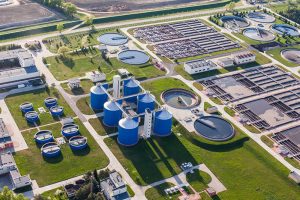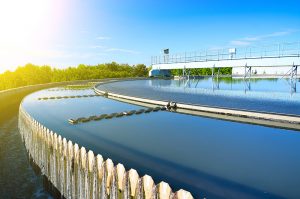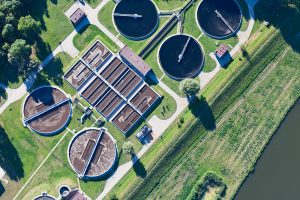Workers in water and wastewater plants are frequently exposed to dangers that can prove fatal if unmonitored. Many of these dangers are related to basic slips, trips and falls that can cause injury, trauma and even drowning, however the major unseen threats to workers come from the hazardous 
The hazards can vary depending on the location and application, but all water and wastewater treatment plants will contain some levels of hazardous gases that must be monitored at all times. Below, we have broken down the major hazards for each type of facility:
Wastewater Facilities
The main gases that are found within wastewater treatment plants are methane and hydrogen sulphide, which are produced as a byproduct of the decomposition of organic materials in the waste flows. If these gases are left to build up, then explosions may occur or the oxygen content in the atmosphere could be displaced. Each of these scenarios can cause great injury or loss of life to a worker, 
Other gases can also be found in wastewater plants as a result of the purifying chemicals used, such as ammonia, chlorine and chlorine dioxide. Elimination of these gases is virtually impossible, therefore they will also need to be correctly detected and monitored throughout the entire working operation to ensure worker safety. It is recommended that flammable fixed gas detectors are fitted in areas such as sewage inlets, where drains containing potential flammable liquids are emptied.
The other major hazard to workers is a lack of oxygen in the atmosphere, which can also be fatal. By equipping a worker with a reliable oxygen monitor, you can ensure that they are always aware of the levels around them.
Water Treatment Facilities
There are a variety of hazards related to water cleaning systems, largely due to the procedures taken to treat the water before it is ready for human consumption. The use of chlorine to disinfect water is a legal 
A combination of fixed and portable gas monitors are recommended due to the varying hazards in different parts of a treatment plant. Any gas storage areas or rooms that gases pass through are required to have fixed monitors that will be consistently monitoring the applicable gases in use, while portable monitors should be a mandatory addition to worker’s safety gear when they have entered a confined area.
Many water and wastewater facilities will involve workers entering a confined space area where further equipment may be required such as torches, escape sets and respirators. It is vital that all workers are equipped with emergency escape equipment in case of any sudden changes that can could endanger their life.
Here at Rockall Safety, we have plenty of safety equipment available to ensure that your water and wastewater workers are protected from any on site hazards. Take a look through our dedicated category where we have chosen a select number of products that are most relevant for this industry.
Alternatively, take a look at our full range of gas monitors, respirators and Torches to find the right equipment for your employees.
If you need more information or you have any enquiries, please contact us on 0845 3300 447 or email our team at [email protected].
Posted by Laura Dronfield





